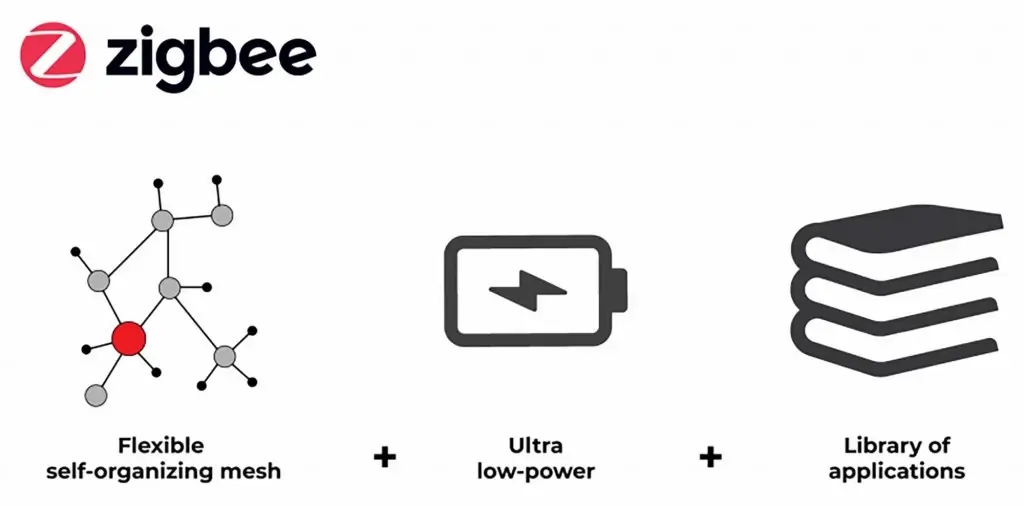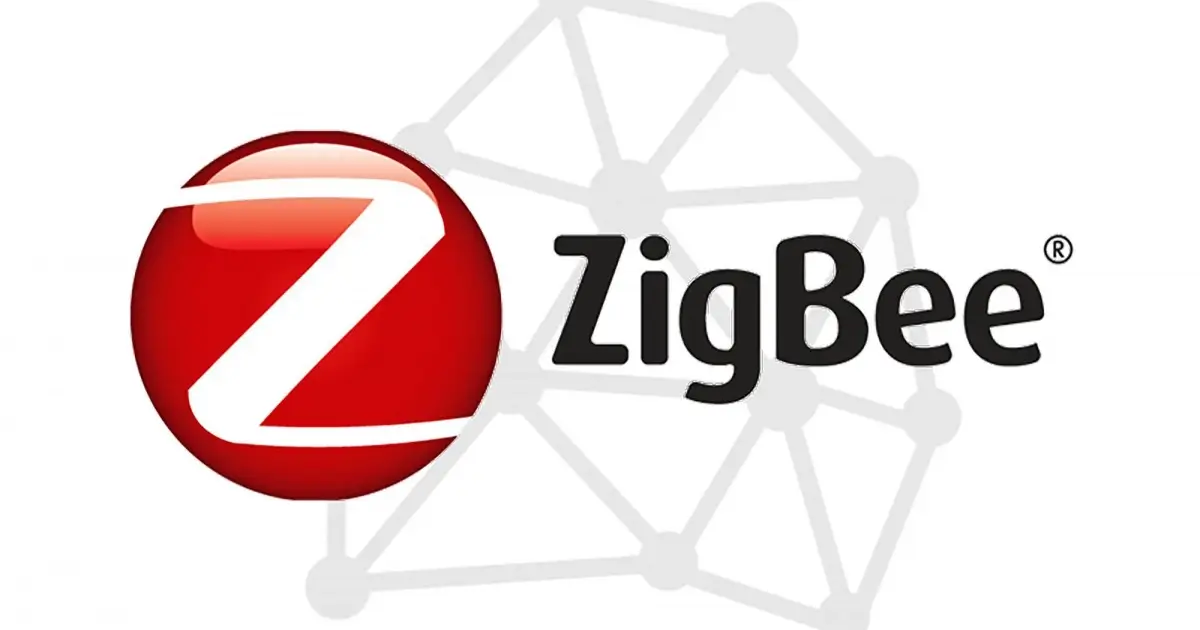In recent years, in order to compete for the smart home market with unlimited potential, there have been controversies around various wireless protocol standards, but it is undeniable that Zigbee has earned enough attention and has attracted much attention and trust. In the field of smart home, compared to other technology protocols, Zigbee has always won the favor of smart home practitioners. So what exactly is Zigbee and is the Zigbee wireless communication protocol suitable for smart homes?
What is Zigbee
Zigbee is a new type of wireless communication technology, which is suitable for a series of electronic components and devices with short transmission ranges and low data transmission rates. Zigbee wireless communication technology can coordinate thousands of tiny sensors with each other and rely on specialized radio standards to achieve coordinated communication. Therefore, this technology is often referred to as Home RF Lite wireless technology and FireFly wireless technology. Zigbee wireless communication technology can also be applied to a small range of wireless communication-based control and automation fields, eliminating the need for computer equipment and a series of digital equipment’s wired cables to each other, and can also realize the wireless grouping of a variety of different digital equipments network to enable them to communicate with each other or access the internet.
ZigBee is similar to Bluetooth and is a new short-range wireless communication technology for sensor and control applications. It was proposed by the IEEE 802.15 working group, and its specifications were formulated by its TG4 working group.
Zigbee wireless communication technology is a network technology applied to Internet communication, which is developed based on the way bees communicate with each other. Compared with traditional network communication technology, Zigbee wireless communication technology shows more efficient and convenient features. As a short-range, low-cost, low-power wireless network technology, Zigbee wireless communication technology is based on the IEEE 802 15.4 wireless standard for networking, security and application software. This technology is particularly suitable for small data traffic services, and can be installed in a series of fixed, portable mobile terminals in a convenient and convenient way. At the same time, Zigbee wireless communication technology can also implement GPS functions.
Zigbee technology is essentially a relatively low-speed two-way wireless network technology that uses the 2.4GHz frequency band. This standard defines the application services that Zigbee technology supports on the IEEE.802.15.4 standard media. The main development direction of the ZigBee Alliance is to establish a basic architecture, which is based on interoperable platforms and configuration files, and has the advantages of low cost and scalable embeddedness. Establishing an IoT development platform is beneficial to the transformation of research results and the industry-university-research collaboration. It is a simple way to realize the IoT.

the Technical Advantages of Zigbee
Zigbee is a wireless connection that can work in three frequency bands of 2.4GHz (popular worldwide), 868MHz (popular in Europe) and 915 MHz (popular in the United States), with transmissions speed up to 250kbit / s, 20kbit / s, and 40kbit / s, its transmission distance is in the range of 10-75m, and it is continuously upgraded. As a wireless communication technology, Zigbee has the following advantages.
- High security. The security of Zigbee technology stems from its systematic design. So far, Zigbee technology has not been preceded by any cracking in the world. Its security status in the field of short-range wireless communications also belongs to a high level. Zigbee provides data integrity check and authentication functions. Three levels of security are provided during data transmission. The first level is actually no security method. For some applications, if security is not important or the upper layer has provided sufficient security protection, the device can choose this method to transfer data. For the second level of security, the device can use an access control list (ACL) to prevent unauthorized devices from obtaining data. No encryption is taken at this level. The third level of security uses AES symmetric ciphers during data transmission. AES can be used to protect data payloads and prevent attackers from impersonating legitimate users.
- Low power consumption. Zigbee technology uses a very low power design. Under the working mode, Zigbee technology has a low transmission rate and a small amount of data to be transmitted, so the signal transmission and reception time is very short. Secondly, in the non-working mode, Zigbee nodes are dormant. The device search delay is generally 30ms, the sleep activation delay is 15ms, and the active device access channel delay is 15ms. Because the working time is short, the power consumption of transmitting and receiving information is low, and the sleep mode is adopted, which makes the Zigbee node very power-saving. The battery working time of Zigbee node can be as long as 6 months to 2 years. This low-power consumption technology makes it widely used in the field of smart homes, including various sensors such as smart door locks, infrared repeaters, temperature and humidity.
- Strong networking capability. Zigbee technology supports strong self-organizing network capability and strong self-recovery capability. Therefore, it is very attractive for underground positioning, parking space positioning, outdoor temperature and humidity collection, pollution collection and other applications. In theory, a Zigbee gateway can connect more than 65,000 devices. In current practical applications, it can already form a stable network of more than 100 types of devices. Such a network scale will be sufficient to meet the needs of future smart homes in the foreseeable future.
- Low cost. By greatly simplifying the protocol, the requirements for node storage and computing capabilities are reduced. According to the research with 8051 series 8-bit microcontrollers, full-function devices require 32K code, streamlined functions require only 4KB code, and Zigbee protocol patents are free.
- Reliable data transmission. Zigbee’s media incoming control layer (MAC layer) uses a talk-when-ready collision avoidance mechanism. Under this fully-confirmed data transmission mechanism, when there is a need for data transmission, it is immediately sent. Each data packet sent must wait for a confirmation message from the receiver and reply with a confirmation message. If no reply is received, it indicates that a conflict has occurred and will be retransmitted. This method can improve the reliability of system information transmission. Zigbee reserves dedicated time slots for communication services that require a fixed bandwidth to avoid contention and conflicts when sending data. At the same time, Zigbee is optimized for delay-sensitive applications. The communication delay and the time delay for sleep state activation are very short.

The Zigbee Alliance previously announced that it will unify its wireless standards into a single standard for Zigbee 3.0. The standard will provide interoperability for all smart devices using Zigbee technology, enabling consumers to access innovative products and services that can work together seamlessly and bring convenience to people’s daily lives.
Zigbee 3.0 covers the widest range of device types, including home automation, lighting, energy management, smart appliances, security devices, sensors and healthcare monitoring products. It supports both easy-to-use DIY equipment and professional installation systems. Based on the IEEE 802.15.4 standard and operating at 2.4 GHz (common worldwide), Zigbee 3.0 uses the Zigbee PRO network to provide reliable communication for the smallest and lowest power devices.
Smart home devices need to have sufficient security, stability, smooth operation, strong device carrying capacity and low power consumption, and Zigbee can meet and do well, so even if Zigbee is mainly used in the industrial field at the beginning, it does not affect its charm in the field of smart home.
Zigbee technology is very suitable for smart home system-level applications, especially smart security systems and smart lighting systems. Today, many well-known manufacturers in the world are also adopting Zigbee technology to carry out research and development of smart products. It can be seen that Zigbee technology has been well received by smart home manufacturers and will continue to develop in the future.


